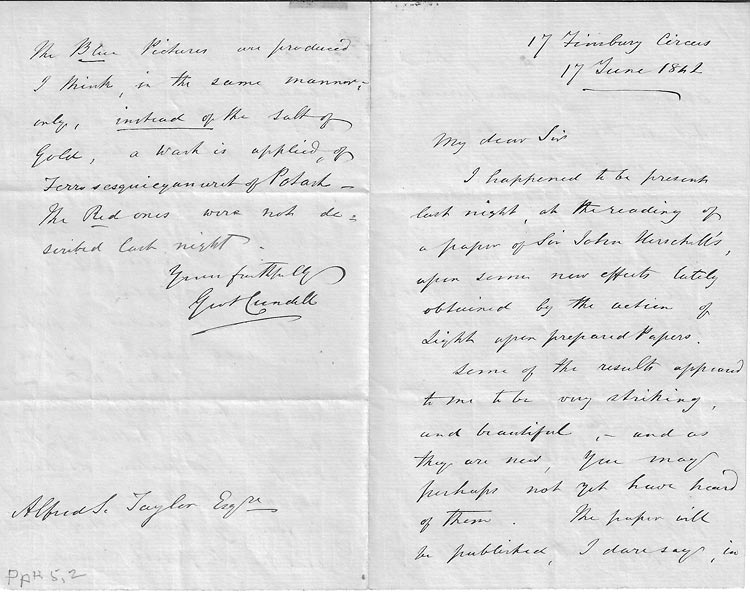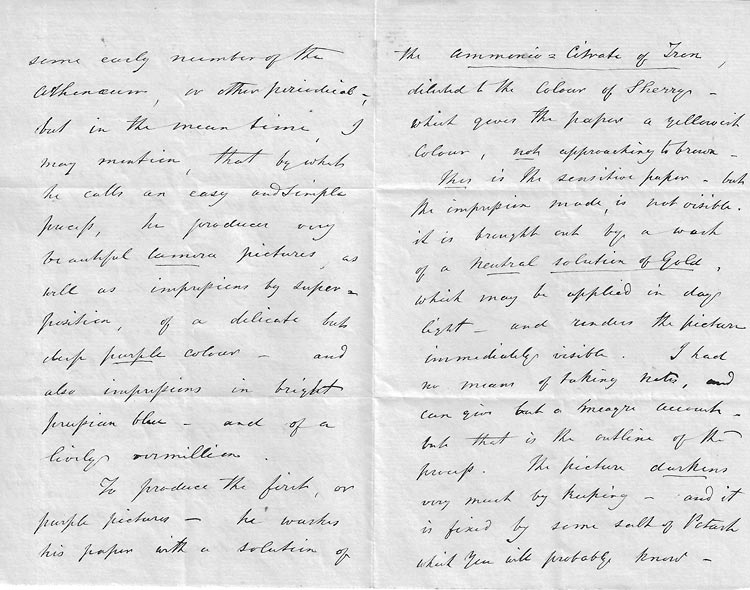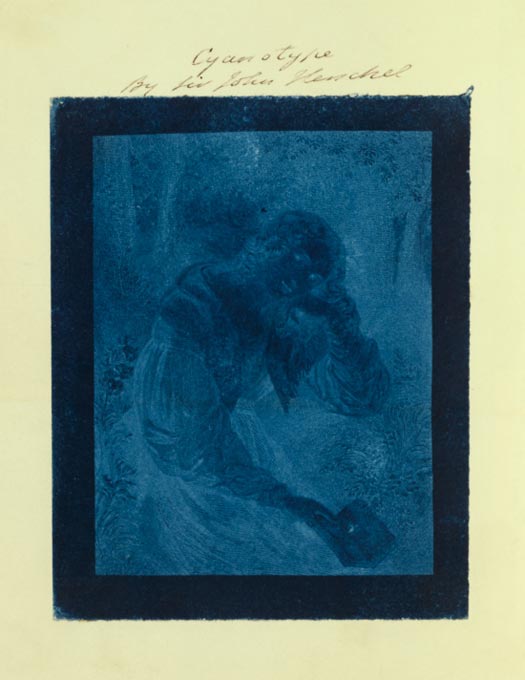Joseph Cundall and Alfred Swaine Taylor were both multi-faceted individuals with an interest in early photography. Cundall was a popular writer in addition to being a photographer, while Taylor is known to be the father of forensics. They both experimented with the calotype process, and shared a keen interest in new processes. So it was natural that when Cundall attended a lecture by John Herschel titled “On the Action of the Rays of the Solar Spectrum on Vegetable colours, and on some Photographic Processes” he would write to his friend the following day about what he had learned. This letter takes us back to a historic night in the history of photography: the night Herschel shared his discovery of the cyanotype process with the world.


17 Finsbury Circus
17 June 1842
My dear Sir
I happened to be present last night, at the reading of a paper of Sir John Herschel, upon some new effects lately obtained by the action of light upon prepared papers.
Some of the results appeared to me to be very striking, and beautiful, and as they are new, you may not yet have heard of them.
The paper will be published, I dare say, in some early number of the Athenæum, or other periodical, but in the meantime, I may mention, that by which he calls an easy and simple , he produces very beautiful camerapictures as well as impressions by superposition of a delicate but purple colour and also impressions in bright Prussian blue, and of a lovely vermillion.
To produce the first, or purple pictures – he works his paper with a solution of the ammoniac citrate of iron, diluted to the colour of sherry – which gives the paper a yellowish colour, not approaching to brown.
This is the sensitive paper but the impression made, is not visible, it is brought out by a wash of a neutral solution of gold, which may be applied in day light, and renders the picture immediately visible.
I had no means of taking notes, and can give but a meagre account, but that is the outline process.
The picture darkens very much by keeping – and it is fixed by some salt of Potash which you will probably know.
The blue pictures are produced I think, in the same manner, only instead of the salt of gold, a wash is applied, of Ferro sesquicyanate of Potash.
The red ones were not described last night,
Ever faithfully
Joseph Cundall


